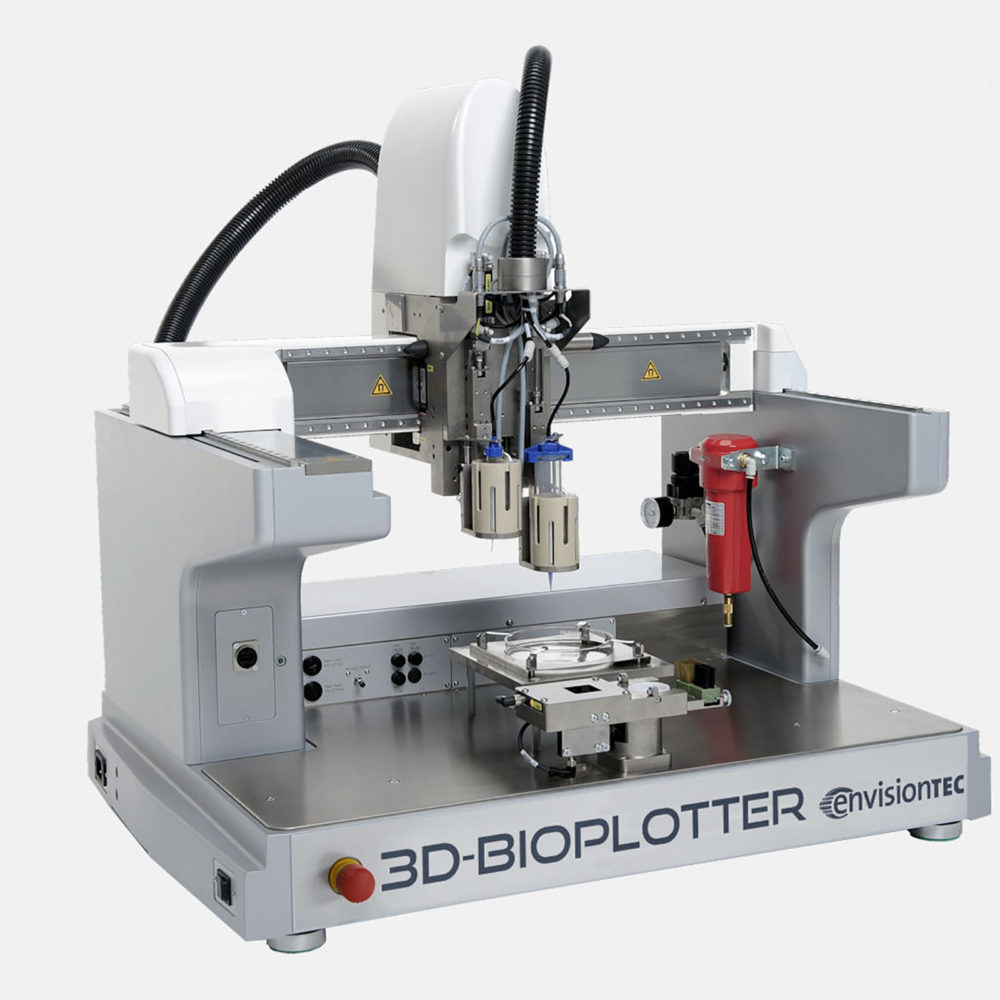In a world first, a patient has received a 3D printed, customized external ear canal implant that releases medication post-surgery to prevent restenosis, which is the re-narrowing of the ear canal. Developed by the Hannover Medical School (MHH) ‘s Ear, Nose and Throat (ENT) clinic in Germany, this innovation is a major stride in patient-specific treatment. Desktop Health‘s 3D-Bioplotter Manufacturer Series created this first adult custom ear implant with drug-release benefits.
According to MHH, the implanted patient had previously undergone multiple surgeries to correct the narrowing of the auditory canal, but none had yielded the expected outcomes. On top of that, the new implant not only serves as a stent to keep the canal open but also administers therapeutic agents to promote healing. This dual function emphasizes the immense potential of 3D printing in producing multifunctional medical devices tailored to individual patient needs.
“We have thus opened the door to a new type of pioneering patient care,” said ENT clinic director Thomas Lenarz.
In-patient applications
However, MHH is not alone in its success. In the United States, the US Food and Drug Administration (FDA) has cleared Dimension Inx‘s proprietary CMFlex, the first 3D printed regenerative bone graft product, and surgeons have implanted it in two patients. Developers used the 3D-Bioplotter to create CMFlex, just like the ear implant. These milestones show how ideas are turning into real treatments for patients, pointing to a shift in the medical field toward personalized patient care.

The ENT clinic at Hannover Medical School in Germany uses Desktop Health 3D-Bioplotter to produce a customized ear implant with drug release for implantation. Image courtesy of Business Wire.
Developed and perfected over the years, the 3D-Bioplotter bioprinter is known for its precision and reliability. Desktop Health, under the umbrella of Desktop Metal (NYSE: DM), acquired the 3D-Bioplotter as part of its expansion into the healthcare segment, seeking to leverage the printer’s capabilities for medical solutions.
Originally conceived at the University of Freiburg, Germany, in the late 1990s and early 2000s, the 3D-Bioplotter extrudes biomaterials through a nozzle to create the desired 3D shape. What sets it apart is its ability to print using multiple materials within a single construct. This capability can be crucial for mimicking the complex structures of natural tissues. Additionally, the technology allows the incorporation of cells and pharmaceuticals. This creates implants that can directly contribute to the healing process, as shown by the latest ear canal implant.
Promising personalized medicine
In 2020, MHH purchased a 3D-Bioplotter machine to develop a groundbreaking external ear canal implant made of silicone. They also aimed to explore additional medical applications with other materials. Dr. Verena Scheper, from the Otolaryngology Clinic’s Inner Ear Pharmacology Department at MHH, spearheaded the team that meticulously crafted the implant’s design. She oversaw its production using the 3D-Bioplotter. Following the implantation, Scheper reported that the initial follow-up showed encouraging results, indicating a successful integration of the implant in the patient.
“We will have a second printer at the beginning of 2024, and it will be set up in the clinic so the clinicians can print in-site for the patients. In the future, we also plan to develop other drug-releasing implants, not based on silicone but on other materials, so that we will have enhanced a system that is biodegradable over time so that we don’t have to explant those implants anymore,” remarks Scheper.
New era of patient care
MHH’s ENT clinic is a pioneer in patient care, mainly known for running the world’s largest cochlear implant program. The clinic has a history of innovation and collaboration, working with acousticians, product manufacturers, and scientists. The development of the drug-releasing ear implant confirms the institute’s dedication to solving challenging health problems with new ideas.

The bioplotter used to 3D print using medical and biological materials. Image courtesy of Desktop Health.
In light of this, the announcement by Desktop Health celebrates not just a single accomplishment but the beginning of a new era in medicine. Ric Fulop, the Founder and CEO of Desktop Metal, said, “The benefits of 3D bioprinting are just beginning to move into actual patients, and we celebrate this important shift in medicine that MHH and other medical innovators are driving forward. In recent months, we’ve seen the first products developed over many years on the 3D-Bioplotter moving into commercial and patient applications. We celebrate these important milestones and what they mean for personalized patient care.”
For patients with unique medical conditions, the promise of personalized treatment solutions that adapt to their specific anatomical and therapeutic requirements could be life-changing. The work of MMH’s ENT clinic and Desktop Health goes beyond just making new medical tools; they are starting to create treatments that are as unique as the patients getting them.
Subscribe to Our Email Newsletter
Stay up-to-date on all the latest news from the 3D printing industry and receive information and offers from third party vendors.
Print Services
Upload your 3D Models and get them printed quickly and efficiently.
You May Also Like
3D Printing News Briefs, July 2, 2025: Copper Alloys, Defense Manufacturing, & More
We’re starting off with metals in today’s 3D Printing News Briefs, as Farsoon has unveiled a large-scale AM solution for copper alloys, and Meltio used its wire-laser metal solution to...
Etsy Design Rule Change Reduces Selection of 3D Printed Goods
Online marketplace Etsy has implemented a rule change requiring all 3D printed goods on the site to be original designs. The update to the site’s Creativity Standards states, ¨Items produced using...
Siraya Tech Introduces New Elastomer 3D Printing Materials, Including Foaming TPU
California company Siraya Tech, founded in 2019 with a focus on material science, customer focus, and agility, develops high-quality 3D printing materials that meet the needs of creators, hobbyists, and...
3D Printing News Briefs, April 12, 2025: RAPID Roundup
The news from last week’s RAPID+TCT in Detroit just keeps on coming! That’s why today’s 3D Printing News Briefs is another RAPID Roundup of more exciting announcements from the trade...

































